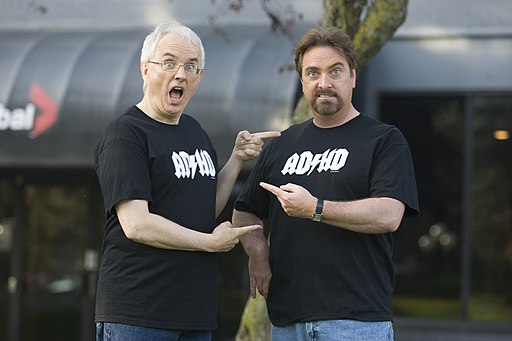WebMD has an article on statistics and facts about Adult ADHD, where it estimated adult ADHD affects more than 8 million Americans, with many of them not knowing it. “Several studies suggest less than 20% of adults with ADHD are aware they have it. And only about a fourth of those who do know are getting treatment for it.” Supposedly, every adult with ADHD had symptoms during childhood; and more than 60% of children with ADHD will still have it as adults. This begs the question, why don’t more adults realize they have it?
WebMD said adult ADHD can affect careers, relationships and other aspects of daily life, costing the U.S. economy up to $138 billion a year in lost income and productivity. It tends to occur with other mental health issues, like anxiety, depression or bipolar disorder. “Symptoms of adult ADHD can be mistaken for those conditions.” WebMD seems to presume ADHD is the primary disorder or cause. But what if it is the reverse? Psychiatrist Allen Frances thinks adult ADHD should not be diagnosed until these and other psychiatric problems are first ruled out (see Part 2).
Although researchers don’t know what causes ADHD, it runs in families. Forty percent of children with ADHD have at least one parent with symptoms. “If you have relatives with ADHD, you’re four to six times more likely to have it yourself.” This article ends with a link to the next article, “Do You Have ADHD?”, which then links to, “ADHD Medications and Side Effects.” If you’ve persisted in following the tidbits on adult ADHD, to this point, you’ll read how “Medication is an important part of your ADHD treatment.”
Another source, saying many of the same things, is the CDC, which in “Research on ADHD,” referred to ADHD as a serious public health problem that effects a large number of children and adults. The reader will learn that the criteria used to diagnose ADHD have changed over time. “This has led to different estimates for the number, characteristics, and outcomes of children with the disorder.” Although the exact causes of ADHD are not known, research show that genes play a role, with other factors contributing or making symptoms worse.
This led to the conclusion that there are many unanswered questions about ADHD and how it affects people throughout their life. In “Data and Statistics About ADHD” the CDC used datasets from parent surveys and healthcare claims to understand diagnosis and treatment patterns for ADHD. Concentrating on children, the CDC reported there were 6 million children between 3 and 17 (9.8%) ever diagnosed with ADHD. Many children with ADHD (64%) had at least one other mental, emotional or behavioral disorder. About half had a behavior or conduct problem (52%).
A national parent survey in 2016 reported 62% of children currently with ADHD were taking ADHD medication and 47% received behavior treatment. About 30% were treated with medication alone; 15% received behavior treatment alone. Around 32% received both medication and behavior treatment. And about 23% with ADHD received neither medication treatment nor behavior treatment. Not surprisingly, the American Psychiatric Association reported in November of 2019 that a study, Chung et al, found adult ADHD diagnosis increased 123% between 2007 and 2016.
Chung and colleagues suggest the increase in ADHD among adults may partly reflect an increasing awareness among health care professionals and the public of ADHD in adults. The study authors also address the misuse of ADHD medications particularly among adult-aged students to boost academic performance, noting that “diagnosis seeking to obtain stimulant medication for nonmedical use may be more common among white vs nonwhite patients.” The study found adults who identified as students were at highest risk of ADHD diagnosis.
Chung et al speculated that this increased risk of diagnosis in students could be due to some individuals seeking diagnosis and treatment for the purposes of “cognitive enhancement” with ADHD medications. They said pharmacological cognitive enhancement with prescription and illegal stimulants among individuals not diagnosed with ADHD has been increasing. There has been to be an concern about cognitive enhancement with ADHD medications among college students for some time. See, “Academic Steroids.”
In a related, but nonacademic article, the Guardian described how some tele-health startups have received criticism for their aggressive and misleading advertising campaigns. “These companies offer evaluations in as little as 30 min with no wait lists and prescribe medication, sometimes including controlled stimulant medications like Adderall and Ritalin.” The startups took advantage of an emergency provision established during the pandemic that permitted healthcare providers to prescribe controlled substances (like ADHD medications) via tele-health. While there are guidelines for diagnosing and treating ADHD in children, “There are no guidelines in the US about how to diagnose adult ADHD.”
The CDC reported that while the prevalence of adult ADHD did increase in recent decades and continued during the COVID-19 pandemic, there was a notable upturn during 2020-2021. Improved access to ADHD care through tele-health during the pandemic “introduced the potential for inadequate ADHD evaluations and inappropriate stimulant prescribing.” The significant increase in adults receiving prescription stimulants during the COVID-19 pandemic “draws attention to the need for clinical practice guidelines for ADHD in adults.”
The Guardian noted that the US medical system can’t serve all the people seeking diagnosis and treatment for ADHD, “and social media is filling in those gaps.” This increased demand contributed to an Adderall shortage that began in October of 2022. See, “Bad Things Could Happen with ADHD and the Adderall Shortage.”
A psychologist in Seattle who conducts adult ADHD evaluations said she thought TikTok accounted for at least 50% of her current requests for intakes. Supporting her estimation, a study in the Canadian Journal of Psychiatry, “TikTok and Attention-Deficit/Hyperactivity Disorder,” found that 52% of the most popular TikTok videos about ADHD were misleading if used to determine if you have ADHD.
TikTok videos with titles like “5 signs you have ADHD” and “5 things ADHDers hate,” are driving a lot of interest around adult ADHD. They list symptoms like daydreaming, swaying to avoid things while walking or picking skin for hours. Some videos have disclaimers, informing viewers that they should not replace medical advice, some are from users who list medical credentials, or are from people who have been diagnosed – but it’s not clear how credible each video is.
According to a psychiatrist who specializes in diagnosing and treating ADHD, the average, normal adult has two or three of these so-called “symptoms.” The DSM-5 diagnosis for ADHD requires at least five ADHD diagnostic criteria or symptoms, and those must cause “significant impairment” in at least two settings, like work and home.
TikTok videos facilitating people getting diagnosed for adult HDHD is an alarming trend. The psychologist in Seattle said she was frustrated when patients come to her because they’ve seen some TikTok videos and are hoping to “understand themselves better.” Some of these patients complain she is “invalidating” their experience when they don’t get the ADHD diagnosis they expect. She’s fearful these “patients” are putting pressure on an already overloaded medical system. The trend raises the question if these TikTok videos have led to more people believing they have adult ADHD, how valid of a diagnosis can it be? More on this in Part 2.






